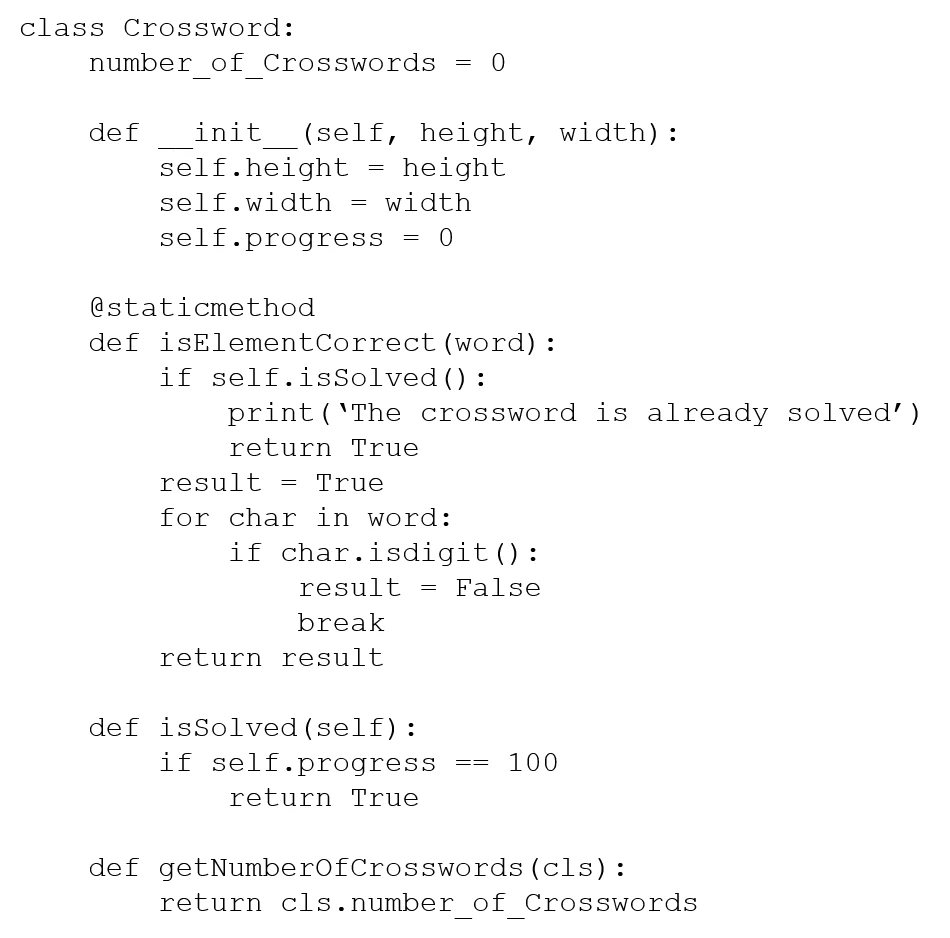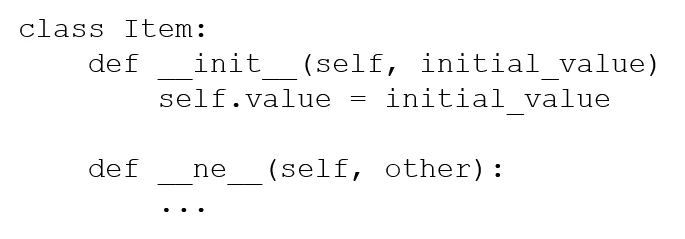

The code snippet defines a function f1 that accepts any number of positional and keyword arguments. The *arg parameter collects all positional arguments into a tuple named arg, and the **args parameter collects all keyword arguments into a dictionary named args. The naming of these parameters does not have to follow specific conventions like args and kwargs; hence, the code is syntactically correct despite non-standard naming.

The code is erroneous. The isElementCorrect method is incorrectly decorated as a @staticmethod while trying to access self, which is an instance variable. Static methods do not have access to self. Furthermore, the getNumberOfCrosswords method should be decorated with @classmethod to properly access class variables.

The @property decorator should be defined before the methods that are responsible for setting and deleting an encapsulated attribute, not after. This is because the @property decorator creates a getter method, and the corresponding @property_name.setter and @property_name.deleter decorators rely on this getter method to function correctly. Therefore, it is crucial for the @property-decorated method to be declared first.